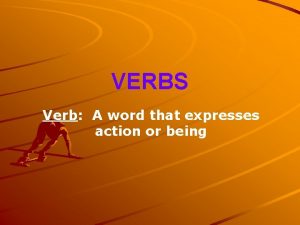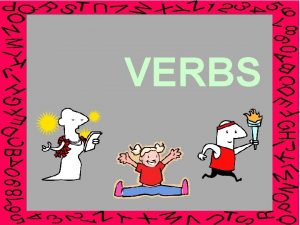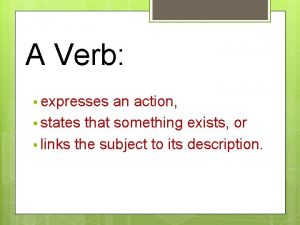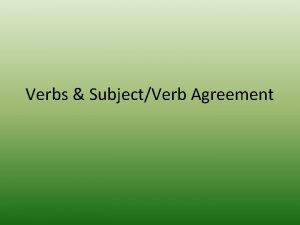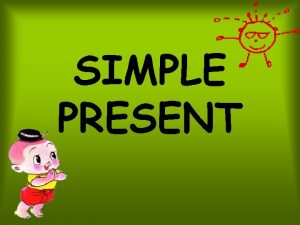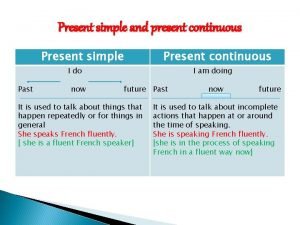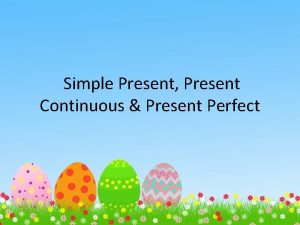Simple present The simple present expresses an action









- Slides: 9

Simple present The simple present expresses an action in the present taking place once, never or several times. It is also used for actions that take place one after another and for actions that are set by a timetable or schedule. The simple present also expresses facts in the present. FORM [VERB] + s/es in third person Examples: You speak English. Do you speak English? You do not speak English.

USE 1 Repeated Actions Use the Simple Present to express the idea that an action is repeated or usual. The action can be a habit, a hobby, a daily event, a scheduled event or something that often happens. It can also be something a person often forgets or usually does not do.

Examples: I play tennis. She does not play tennis. Does he play tennis? The train leaves every morning at 8 AM. The train does not leave at 9 AM. When does the train usually leave? She always forgets her purse. He never forgets his wallet. Every twelve months, the Earth circles the Sun. Does the Sun circle the Earth?

USE 2 Facts or Generalizations The Simple Present can also indicate the speaker believes that a fact was true before, is true now, and will be true in the future. It is not important if the speaker is correct about the fact. It is also used to make generalizations about people or things.

Examples: Cats like milk. Birds do not like milk. Do pigs like milk? California is in America. California is not in the United Kingdom. Windows are made of glass. Windows are not made of wood. New York is a small city. IT IS NOT IMPORTANT THAT THIS FACT IS UNTRUE.

USE 3 Scheduled Events in the Near Future Speakers occasionally use Simple Present to talk about scheduled events in the near future. This is most commonly done when talking about public transportation, but it can be used with other scheduled events as well. Examples: The train leaves tonight at 6 PM. The bus does not arrive at 11 AM, it arrives at 11 PM. When do we board the plane? The party starts at 8 o'clock. When does class begin tomorrow?

USE 4 Now (Non-Continuous Verbs) Speakers sometimes use the Simple Present to express the idea that an action is happening or is not happening now. This can only be done with Non-Continuous Verbs and certain Mixed Verbs. Examples: I am here now. She is not here now. He needs help right now. He does not need help now. He has his passport in his hand. Do you have your passport with you?

Simple Present Tense Quiz Choose the correct answer (click to se all the answers). 1. Do you______ chocolate milk? (like-likes-be like) 2. He ______ not want to come to the movies. (dodoes-is) 3. We ______too late to catch the bus? (is-are-am) 4. It ______ a beautiful day today. (Is-are-am) 5. Sorry, Lisa _____ not here at the moment. (am-is. Do)

Simple Present Tense Quiz Answers 1. Do you like chocolate milk? 2. He does not want to come to the movies. 3. We are too late to catch the bus? 4. It _Is_ a beautiful day today. 5. Sorry, Lisa _is_ not here at the moment.
 Non continuous verbs
Non continuous verbs A word that expresses action
A word that expresses action A word that expresses action
A word that expresses action Which of these verbs expresses an action that is
Which of these verbs expresses an action that is Expresses action
Expresses action Past continuous present simple
Past continuous present simple Present simple past simple future simple present continuous
Present simple past simple future simple present continuous Present simple present continuous past simple future simple
Present simple present continuous past simple future simple Continuous future in the past
Continuous future in the past I write a letter now past continuous tense
I write a letter now past continuous tense

